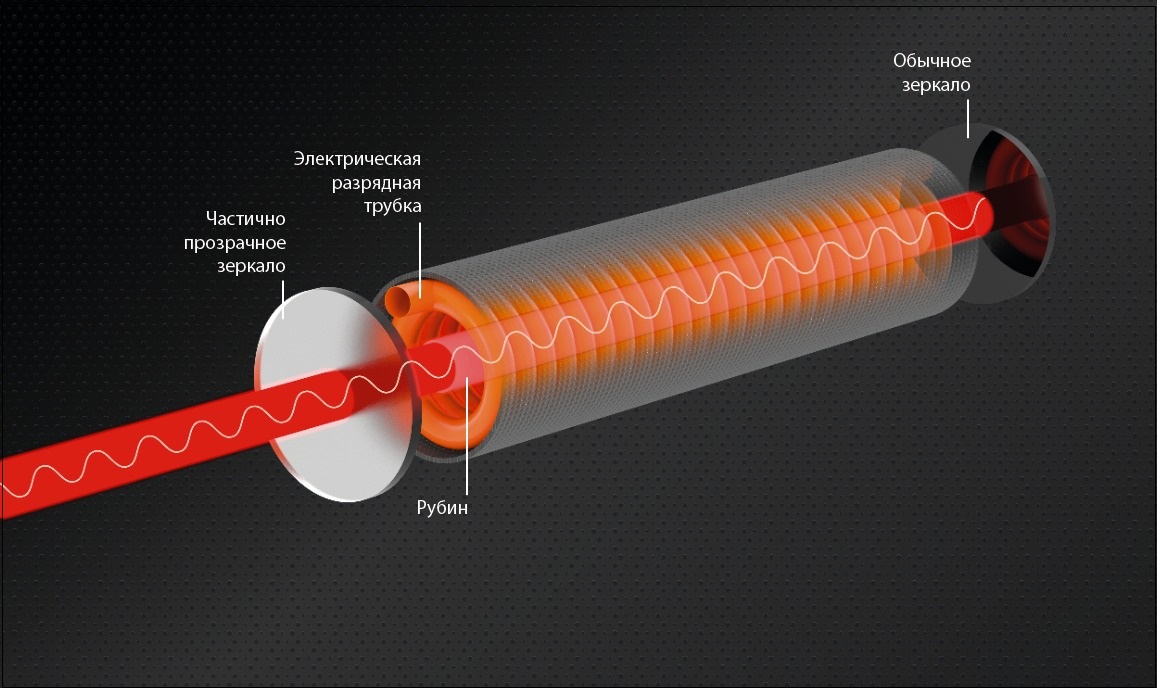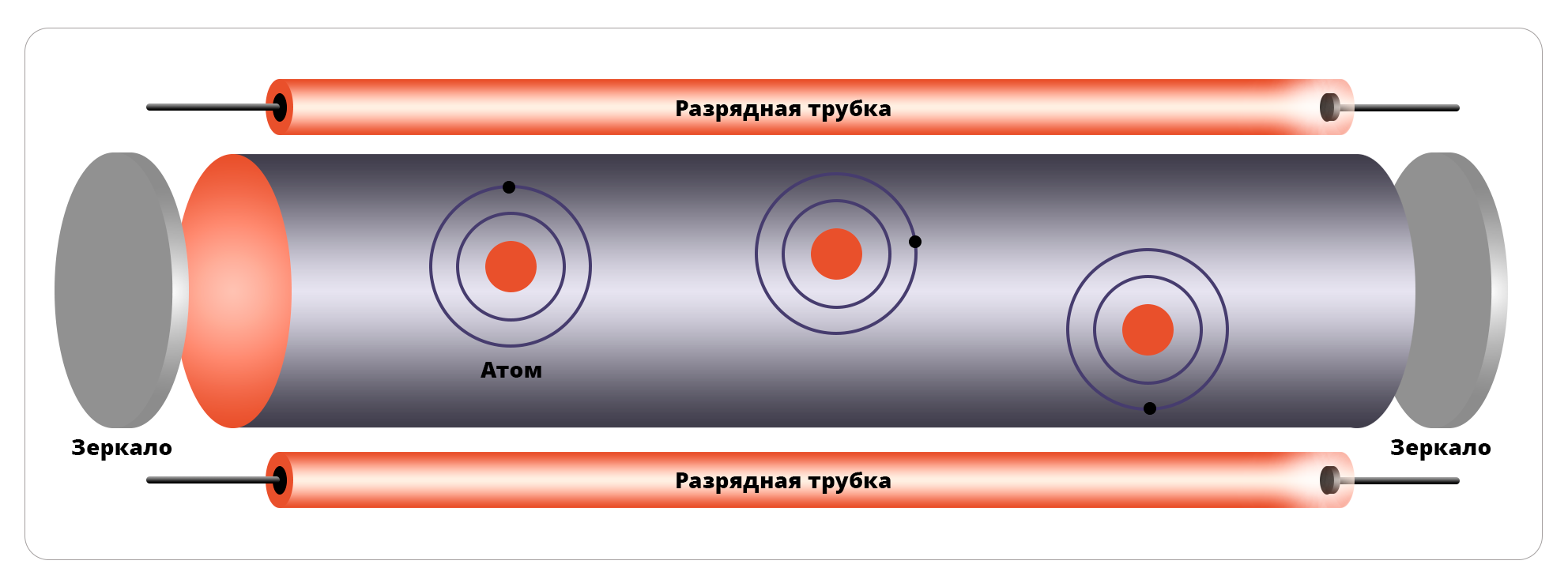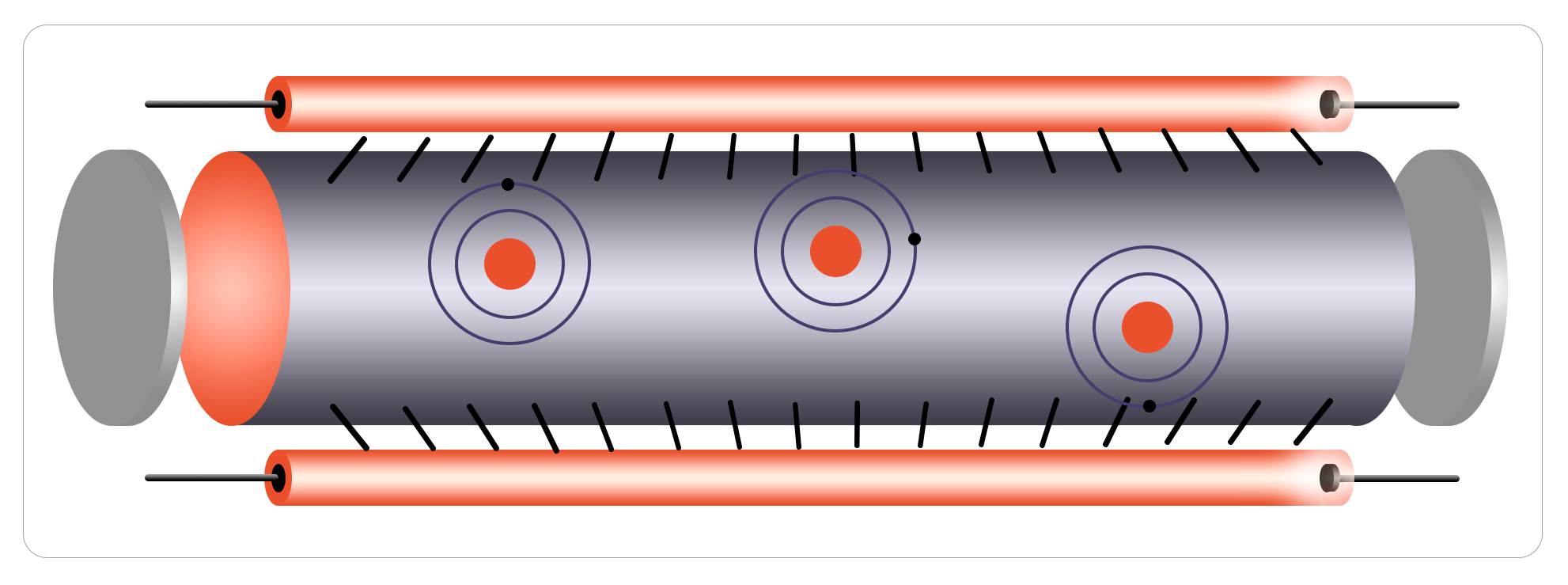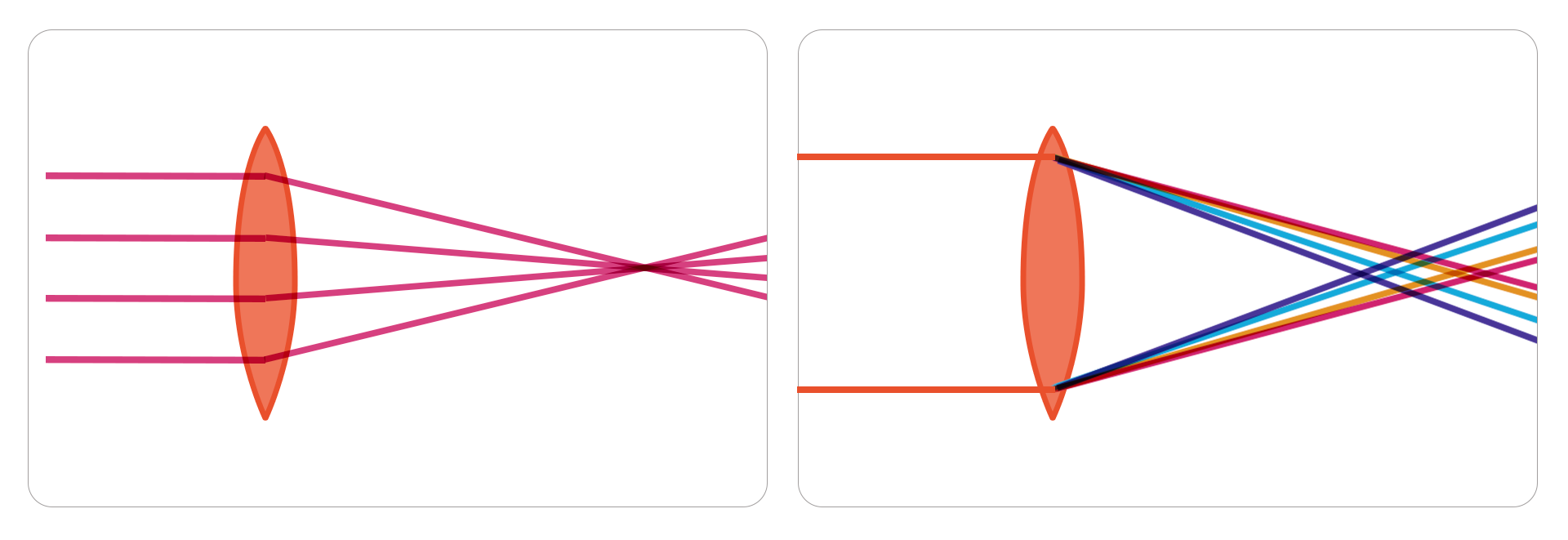Lasers are a source of great excitement, often reminding us of science fiction films and future scientific developments. These devices seem supernatural, and have been employed by creators of blockbusters...
Lasers are a source of great excitement, often reminding us of science fiction films and future scientific developments. These devices seem supernatural, and have been employed by creators of blockbusters including X-Men and Star Wars, where jedi warriors fight each other using laser lightsabers.
However, lasers have left the realm of science fiction a long time ago and have since become a working instrument in many areas of contemporary science. These devices are extremely useful and can be found almost everywhere in our everyday lives.
What does the name mean?
The name originates from the expression: Light Amplification by Stimulated Emission of Radiation. The first letters of each word together create the abbreviation LASER.
In simple terms, lasers create highly concentrated streams of light.
Who invented lasers?
The first discoveries that eventually brought us lasers were made at the dawn of the XX century.
Einstein
In 1917, Albert Einstein released a revolutionary paper where he described the basics of quantum mechanical working principles of lasers. It was a real breakthrough because the author predicted a new physical phenomenon: stimulated emission. Einstein’s theory states that light can be emitted and absorbed — and not only in spontaneous ways. Forced (or stimulated) emission is also possible. This means that multiple electrons can be ‘forced’ to emit light of a specified wavelength, all at once.
Maiman
This idea was only practically implemented in the 1960s. The very first laser was created by California-based physicist Theodore Maiman on May 16, 1960. The laser was based on a ruby crystal and a Fabry-Perot resonator. A flash lamp was used for pumping. The laser worked impulsively with a wavelength of 694.3 nm.
Basov, Prokhorov and Townes
In 1952, Soviet scientists Nikolai Basov and Aleksandr Prokhorov told the world that it is possible to create a new microwave laser based on ammonia. At the same time, this idea was also developed independently by American physicist Charles Townes. He showed how this laser can work in 1954. A decade later, in 1964, all three were awarded with the Nobel Prize in physics for their discoveries.
Present day
We are currently living in an era of intense development of lasers. New types of lasers (chemical, excimer, semiconductor, free electron) are introduced almost every year.
How lasers work
For a better understanding of how lasers work, let’s take a look at their structure. The average laser looks something like this: a tube with a hard crystal on the inside, usually a ruby. It is covered in mirrors on both ends: one is partially reflective, the other is fully reflective. Atoms of the crystal generate light waves under the influence of electrical coils. These waves move from one mirror to the next until they reach a level of intensity that is sufficient for them to pass through the partially reflective mirror.
How are laser beams created?
- Stage 1: turned off laser
The electrons in all atoms (the black dots on the inner circles in the image) take up the main energy level.
- Stage 2: the moment after turning on the laser.
Influenced by the energy from the flash tube, electrons move to higher energy orbits (the outer circles in the image).
- Stage 3: appearance of a laser beam.
The electrons start leaving the higher energy orbits and return to the basic level. At the same time, they start emitting light and influencing all other electrons. There is a resulting beam of light, with each source producing the same wavelength. The light of the laser increases in intensity as more new electrons return to the lower orbits.
Focus sharpness
The laser beam is made up of light waves of the same length, so the color is also the same for the entire beam. Using a lens, this light can be accurately targeted towards a single point. (See image: on the left — laser beam, on the right — natural light). When comparing a laser to natural light, you will notice that the latter does not focus as well as the former. By concentrating a large amount of energy on a narrow beam, lasers can transmit these beams across large distances, without the light getting diffused or weakened as it does when it is made up of many colors, like natural light. These properties make lasers an indispensable tool for humanity.
Physical explanation
Let’s take a closer look at the laser mechanism described above. We will find out which underlying laws of physics are responsible for its operation.
Active medium
Laser radiation requires a so-called ‘active medium’. This medium is the only environment in which the phenomenon can take place. How is an active medium created? First of all, you need a special substance, which is usually made up of ruby crystals or YAG. This substance represents the active medium. A tube or rod made out of this substance is inserted into the resonator, which is made up of two mirrors aligned in parallel to each other. The front mirror is partially transparent, while the one in the back is a regular mirror. A flash lamp is mounted next to the tube. The tube and the flash lamp are surrounded by a mirror, which is usually made out of quartz covered in a layer of metal. The mirror helps collect the light on the tube.
Atomic energy levels
One important point: the active medium is composed in such a way that each atom has at least three energy levels. In their resting state, atoms in the active medium are at the lowest energy level, E0. As soon as the flash lamp is turned on, atoms absorb the energy emitted by its light, move to the E1 level and spend a relatively long time in this activated state. This is what causes the laser impulse.
Population inversion
Population inversion is a fundamental concept in physics. This is a state of a medium when the number of particles at a higher energy level in an atom is higher than it is at the lower level. A medium is considered active if it has an inverse population in its energy levels.
Photons and light beams
Electrons are not chaotically distributed within an atom. They have their own orbits surrounding the nucleus. An atom that receives a quantum of energy has a high probability of passing into an agitated state which is characterized by electrons switching orbits — from the lowest ones (metastable / basic) to the ones with the highest level of energy. Electrons cannot stay too long on this orbit, so they are forced to return to the basic level. When this happens, each electron emits a lightwave called a photon. A single atom launches a chain reaction, with electrons in many other atoms also shifting to orbits with lower energy levels. Identical light waves are propelled by an enormous flow. The changes in these waves are consistent over time and join together to create a powerful light beam. This light beam is called a laser beam. Some lasers create beams that are strong enough to cut through stone or metal.
Laser classification
There are several types of lasers which differ from one another based on aggregate state of the active medium and the way it is activated. We will list the main types.
Solid-state lasers
This was the first type of laser invented. They had a solid active medium consisting of ruby crystals and a small amount of chromium ions. Pumping was performed using a flash lamp. The first ruby laser was built by American scientist T. Maiman in 1960. Solid-state lasers are also made from glass with an addition of Nd, yttrium aluminium garnet Y2Al5O12 with an addition of chromium and neodymium — all of these substances also make up the active medium of solid-state lasers.
Gas lasers
The active medium in gas lasers is made up of gases with extremely low pressure or some combination of these gases. The gases fill a glass tube which is inlaid with electrodes. American scientists A. Javan, W. Bennett and D. Herriott first created the gas laser in 1960. This type of laser uses electrical impulses created by high-frequency generators for pumping. Gas lasers are characterized by their continuous beams. Gas density is rather low, so there is a need for a relatively long rod for the active medium. The intensity of the beams is created by the mass of the active medium.
Gas-dynamic, chemical and excimer lasers
These three types can be generally classified as gas lasers.
- Gas-dynamic lasers are based on the same principles as jet engines. Within the laser, fuel with additional particles of active medium gases is combusted. During the fuel combustion process, gas molecules pass into an excited state, and then as a cold ultrasonic flow they start emitting a powerful coherent radiation, thus producing energy.
- In chemical lasers, radiation impulses appear as a result of a chemical reaction. The strongest laser of this type is based on a reaction between atomic fluoride and hydrogen.
- Excimer lasers operate based on special molecules that are always in an excited state.
Liquid lasers
The first liquid lasers appeared almost concurrently with solid-state lasers, in the 1960s. An active medium is created using various solutions of organic compounds. This substance has a higher density than gas, but lower than that of solids. That’s why these lasers can generate a relatively powerful radiation (up to 20 W), even though the volume of the active medium contained within them is relatively low. They can operate in impulsive and continuous modes. Flash lamps and other lasers are used for pumping.
Semiconductor lasers
The first semiconductor lasers appeared in 1962 as a result of simultaneous discoveries made by several American scientists: R. Hall, M.I. Nathan, T. Quist, together with their groups. The operation of this laser was theoretically proved earlier, in 1958, by Russian physicist N.G. Basov.
Semiconductor lasers use semiconductor crystals (such as GaAs, gallium arsenide) as an active medium. At first glance, one might be tempted to place them in one category with solid-state lasers. However, they have a distinctive differentiator: radiation transitions occur between energy zones or subzones inside the crystal instead of atomic energy levels. In such lasers, pumping is done using a constant electric current. The edges of the semiconductor crystal are carefully polished, allowing them to serve as an excellent resonator.
Natural lasers
Scientists have discovered natural lasers in our Universe. There are some giant interstellar clouds created by condensed gases. Populations are naturally inverse inside them. Pumping is enabled by light from nearby stars or other sources of cosmic radiation, with gas clouds serving as an excellent active medium with a length of several hundred million kilometres. A natural astrophysical laser is thus created, with no need for a resonator: a forced electromagnetic radiation is naturally created within the laser, as soon as the light wave passes.
Properties of laser radiation
Laser light has a range of unusual and very valuable properties setting it apart from light emitted by regular heat sources.
- Laser radiation is coherent and almost completely monochromatic. These features were previously discovered only for radio waves from well stabilized transmitters.
- The diffusion of forced radiation takes place only along the axis of the resonator. Laser beam expansion is very weak, with an almost unnoticeable divergence (several arc seconds).
- The above properties allow laser beams to focus on an extremely small point. The energy in the focal point has an extremely high density.
- Due to the monochromatic character of the radiation and the high energy density, laser radiation can reach extremely high temperatures. For example, the temperature of the radiation of an impulse laser with a power of 1 Petawatt (1015 W) is over 100 million degrees.
Laser applications
The properties of laser radiation are truly unique. This has made lasers indispensable in a variety of scientific and technical industries. Lasers are also widely used in medicine, entertainment, transportation and everyday life.
Technological lasers
- Due to their high capacity, continuous lasers are actively used for cutting, welding or soldering parts made of various materials. At high laser radiation temperatures, it is even possible to weld together materials that cannot be connected to each other using any other methods. For example, welding together metals and ceramics to create metal-ceramics, a new material with unique properties.
- Laser beams that can focus on a minuscule point with the diameter of a micron are used to create microcircuits.
- Laser beams are perfectly straight — yet another amazing quality. This allows us to use them as the most accurate ‘rulers’ in construction. Both construction and geodesy use impulse lasers to measure large distances by calculating the time it takes for a light impulse to move from one point to another.
Laser communication
With the advent of lasers, communication and information recording have reached new heights.
As radio communication developed, it eventually transitioned to ever shorter wavelengths as it was proven that high frequencies (with shorter wavelengths) offer the highest bandwidth for communication channels. The real breakthrough came with the understanding that light is also an electromagnetic wave, except it is several tens of thousands of times shorter. As a result, laser beams can be used to transmit tens of thousands of times more information than you can achieve through high-frequency radio channels. This discovery led to the advancement of various types of communication around the globe.
Laser beams are also used to record and play CDs with sounds (music) and images (photos and movies). The audio recording industry took a giant step forward with the help of this instrument.
Medical applications of lasers
Laser technologies are widely used both in surgery and general therapy.
- For example, thanks to its unique properties, laser beams can be easily injected through eye pupils to ‘weld’ a detached retina back into place, thus correcting significant defects in a hard-to-reach area in the optic disk.
- Contemporary surgery makes great use of laser scalpels in difficult operations, as it minimizes damage to live tissues.
- Low-intensity laser radiation speeds up the regeneration of damaged tissues. It also has an effect similar to acupuncture practiced in Eastern medicine, giving birth to a process called laser acupuncture.
- Multibeam and picosecond lasers are actively used in cosmetology.
Contemporary scientific research
- Due to the high density of laser energy and the high temperature of its radiation, it is possible to study chemicals in the extreme states they have in burning stellar depths.
- Contemporary scientists aim to create a thermonuclear reaction. To achieve this, they need to use laser beams to compress an ampoule containing deuterium and tritium (so-called thermonuclear synthesis).
- Lasers are irreplaceable in genetic engineering and nanotechnology (that work with objects the size of one-millionth of a millimeter — 10–9 m). Laser beams are used to overcome serious limitations: cutting, moving and connecting gene components, biological molecules and nanotechnology parts that are invisible to the naked eye.
- Laser locators are LIDAR used to study the properties of the atmosphere.
Military lasers
Lasers have a wide range of applications in the military. For example, they are often used for reconnaissance missions, specifically for target location and communication. However, lasers are primarily used to develop and manufacture new types of weapons. Chemical or excimer laser beams based on Earth or orbit are extremely powerful. They can easily destroy or disable enemy military satellites and planes in the course of military operations. There are already some ongoing developments and prototypes of laser guns which will be given to military space station crew members. This isn’t the plot of a science fiction film — these are the latest scientific developments!
Lasers in the entertainment industry
Lasers have found a wide range of applications in the entertainment industry. Many readers are familiar with laser shows: these performances often accompany festivals, concerts, various celebrations. Laser shows can be created both inside and outside. Event organizers can pick the right equipment for their goals and project any images in any range of colors.
One of the most memorable events accompanied by a laser show was a concert given by famous musician Jean-Michel Jarre in Vorobiovy Gory in 1995. He was invited by Yury Luzhkov to celebrate Moscow’s 850th anniversary.
The musician performed in front of the MSU building while fragments from the history of the city were projected onto the building.
Today, it’s hard to surprise anyone with a laser show. In November 2012, New York became the setting for a short-term laser installation called Global Rainbows: a 35-kilometer laser beam shot into the sky. The piece was installed following the devastation of Hurricane Sandy in October 2012. The giant rainbow symbolized the resilience of life in the city despite the impact of the catastrophe.
Another interesting example of using lasers in the entertainment industry is a laser party suit created by Taiwanese designer Wei-Chieh Shih. The clothing is made up of a laser installation that colors everything around it with red light by creating beams facing different directions.
Lasers in transportation
Lasers can also be useful in transportation. Take the Netherlands for example: there are plans to implement an installation of laser emitters on train locomotives, which will remove garbage and fallen leaves from the tracks while the train is moving. All foreign objects sticking to the tracks increase the braking distance as well as the risk of an accident.
Lasers can also be used for cycling. Not all streets have special markings for cyclists. When it’s dark, some drivers might not even see the markings anyway. ‘Smart’ bikes now come equipped with an unusual feature: they can project a bike lane using a laser installation. This approach increases safety on the road: cyclists gain visibility for other road users after dark.
Another similar application of lasers was proposed by the creators of innovative street safety system Guardian. The development is aimed towards installing special emitters onto signposts near streetlights. When the red light is on for pedestrians, passage is closed with a laser. As soon as it switches to green, the red light blocks passage for cars. The system is geared towards increasing safety on the roads: it works as a psychological deterrent.
Laser gadgets
Lasers are built into certain modern gadgets. For example, the Magic Cube device can project a virtual keyboard onto a desktop or any other surface. The gadget is geared towards tablet and smartphone users.
Laser applications in sports
Nike came up with a particularly interesting application for lasers. Their development includes a mobile installation which can project soccer playing fields using laser beams. The playing field can be projected onto any flat surface: both in the city and in the country.
Conclusions
We’re not exaggerating when we say that since their invention in the middle of the XX century, lasers have played an important role in our lives, much like electricity and the radio. Lasers have entered into almost every area of activity, and their sudden disappearance would lead to a much less comfortable world. Even the text of this article that you are reading on the screen of your computer or smartphone is available thanks to semiconductor lasers, which are actively used in the latest optical means of communication. It’s impossible to imagine computers without lasers, and thus, we would miss out on an enormous part of our modern lives. Due to their interesting structure, lasers open new development prospects for modern science. Their qualities are extremely nuanced, and it’s safe to say that laser beams light the way for themselves into absolutely all areas of our lives, making us feel better and happier!
Share this with your friends!










Be the first to comment
Please log in to comment